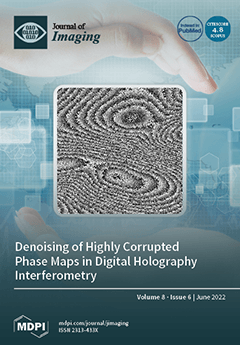With a wide range of applications, image segmentation is a complex and difficult preprocessing step that plays an important role in automatic visual systems, which accuracy impacts, not only on segmentation results, but directly affects the effectiveness of the follow-up tasks. Despite the
[...] Read more.
With a wide range of applications, image segmentation is a complex and difficult preprocessing step that plays an important role in automatic visual systems, which accuracy impacts, not only on segmentation results, but directly affects the effectiveness of the follow-up tasks. Despite the many advances achieved in the last decades, image segmentation remains a challenging problem, particularly, the segmenting of color images due to the diverse inhomogeneities of color, textures and shapes present in the descriptive features of the images. In trademark graphic images segmentation, beyond these difficulties, we must also take into account the high noise and low resolution, which are often present. Trademark graphic images can also be very heterogeneous with regard to the elements that make them up, which can be overlapping and with varying lighting conditions. Due to the immense variation encountered in corporate logos and trademark graphic images, it is often difficult to select a single method for extracting relevant image regions in a way that produces satisfactory results. Many of the hybrid approaches that integrate the Watershed and K-Means algorithms involve processing very high quality and visually similar images, such as medical images, meaning that either approach can be tweaked to work on images that follow a certain pattern. Trademark images are totally different from each other and are usually fully colored. Our system solves this difficulty given it is a generalized implementation designed to work in most scenarios, through the use of customizable parameters and completely unbiased for an image type. In this paper, we propose a hybrid approach to Image Region Extraction that focuses on automated region proposal and segmentation techniques. In particular, we analyze popular techniques such as K-Means Clustering and Watershedding and their effectiveness when deployed in a hybrid environment to be applied to a highly variable dataset. The proposed system consists of a multi-stage algorithm that takes as input an RGB image and produces multiple outputs, corresponding to the extracted regions. After preprocessing steps, a K-Means function with random initial centroids and a user-defined value for
k is executed over the RGB image, generating a gray-scale segmented image, to which a threshold method is applied to generate a binary mask, containing the necessary information to generate a distance map. Then, the Watershed function is performed over the distance map, using the markers defined by the Connected Component Analysis function that labels regions on 8-way pixel connectivity, ensuring that all regions are correctly found. Finally, individual objects are labelled for extraction through a contour method, based on border following. The achieved results show adequate region extraction capabilities when processing graphical images from different datasets, where the system correctly distinguishes the most relevant visual elements of images with minimal tweaking.
Full article






